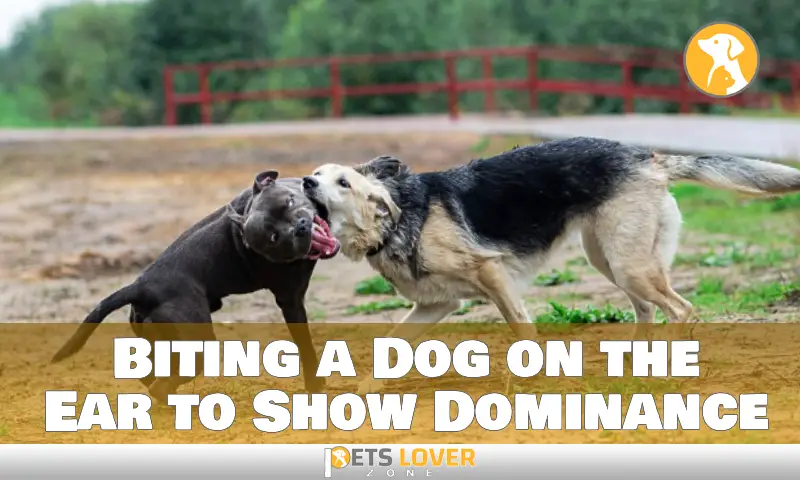To stop a dog from chasing a cat, cesar millan recommends using training techniques like redirection and positive reinforcement. By teaching the dog to focus on something else, such as a toy or a command, you can redirect its attention away from the cat.
Consistency and patience are key when implementing these methods to modify the dog’s behavior. Additionally, creating a safe and controlled environment, such as keeping the dog on a leash or separating the cat and dog in different areas of the house, can help prevent chasing incidents.
With proper training and management, you can successfully address the issue of dogs chasing cats.
Importance Of Stopping Dog Chasing Cat
Dog chasing cat behavior can have a negative impact on the cat’s well-being. It is important to address this issue to ensure the safety and happiness of both pets. Dogs chasing cats not only causes stress and fear for the cat, but it can also lead to physical harm such as scratches or bites.
Additionally, this behavior can disrupt the harmony in the household and create tension between the two animals. By stopping dog-chasing cat behavior, we can prevent these dangers and create a peaceful environment for both pets to coexist. It is essential to provide proper training and supervision to teach dogs appropriate behavior around cats.
Building positive associations, setting boundaries, and redirecting the dog’s attention are effective strategies to curb this chasing instinct.
Understanding Dog Chasing Cat Behavior

Understanding the instinctual nature of dogs is key to addressing their chasing behavior towards cats. Dogs, being descendants of wolves, have a strong prey drive ingrained in their DNA. This drive to chase and capture small animals is a natural instinct that dates back to their hunting days.
It is important to recognize that dogs are not chasing cats out of spite or as a form of aggression. Instead, their behavior stems from their innate need to fulfill their hunting instincts. To effectively stop dog-chasing cat behavior, it is crucial to provide appropriate outlets for their energy and prey drive.
Engaging in regular exercise, mental stimulation, and obedience training can help redirect their focus and satisfy their natural instincts. Additionally, utilizing positive reinforcement techniques and creating positive associations between dogs and cats can help discourage chasing behavior. With patience, consistency, and understanding, it is possible to modify a dog’s behavior and establish harmonious relationships between dogs and cats in the household.
Establishing Leadership As The Key
Establishing leadership is crucial when it comes to stopping your dog from chasing your cat. By displaying respectful and confident leadership, you can build a strong relationship with your furry friend. This means setting boundaries, using consistent commands, and rewarding good behavior. When interacting with your dog, avoid repetitive terms and choose different expressions to maintain their interest.
Take the time to understand your dog’s needs and provide the guidance and structure that they crave. By doing so, you will create a harmonious home where your dog and cat can peacefully coexist.
Ensuring Proper Training And Socialization
Proper training and socialization are key to stopping dogs from chasing cats. Obedience training should be consistent. Expose your dog to other animals for socialization to reduce the urge to chase. This helps them understand boundaries and acceptable behavior. Teaching commands like “leave it” and “stay” aids in redirecting their focus.
Positive reinforcement, like treats and praise, helps reinforce good behavior. Provide regular exercise to keep your dog physically and mentally stimulated. Maintain calm and assertive energy when training your dog. Patience and consistency are crucial to achieving the desired results.
Creating A Safe And Secure Environment
To create a safe and secure environment for your dog and cat, it’s crucial to supervise their interactions closely. Make sure to properly secure your house and yard, preventing any chances of escape for either pet. Additionally, consider using baby gates or barriers to separate them when necessary.
Encourage positive interactions by gradually introducing them and providing treats or rewards for calm behavior. Always monitor their body language for any signs of aggression or discomfort. Regular exercise and mental stimulation can help redirect the dog’s chasing instincts. Remember, patience and consistency are key to training your pets to coexist peacefully.
With time and proper guidance, you can stop your dog from chasing your cat and create a harmonious home for all.
Using Positive Reinforcement Techniques
To stop dogs from chasing cats, cesar millan recommends using positive reinforcement techniques. Reward-based training methods are essential for encouraging desirable behaviors in your dog. By rewarding your dog with treats, praise, or play whenever they exhibit positive behavior, you can reinforce and strengthen these behaviors.
For instance, if your dog remains calm and avoids chasing the cat, reward them immediately with a treat or praise. This positive association will encourage your dog to repeat the desired behavior. Consistency is crucial when using positive reinforcement. By consistently rewarding your dog for not chasing the cat and redirecting their attention to different activities, you can effectively break this instinctual behavior.
Remember to provide ample exercise and mental stimulation for both your dog and cat to prevent boredom and reduce the likelihood of chasing behaviors.
Implementing Effective Management Strategies
Dogs chasing cats can be a common issue, but with effective management strategies like using barriers and gates, you can prevent this behavior. Implement controlled introductions and gradual integration to familiarize your dog with the cat. By separating them initially, you provide a safe environment where they can observe and get used to each other’s presence without direct contact.
Use gates or baby gates to create physical barriers in your home, allowing the dog and cat to have separate spaces. This helps prevent chasing and establishes boundaries. When introducing them, keep the interactions brief and supervised, gradually increasing the time they spend together.
Remember to reward positive behavior and provide plenty of mental and physical stimulation for your dog to lessen their desire to chase the cat. With patience and consistency, you can stop your dog from chasing your cat and foster a peaceful coexistence between them.
Addressing Specific Triggers And Redirecting Focus
To stop your dog from chasing cats, it’s essential to identify the triggers that prompt this behavior. Is it specific movements, sounds, or smells? Once you’ve determined the triggers, use distraction and redirection techniques. For instance, when your dog starts to chase a cat, redirect their attention to a toy or treat.
This helps shift their focus away from the chase. Another technique is to use obedience commands like “sit” or “stay” to distract your dog from the urge to chase. Consistency is key. With time and patience, your dog will learn to respond to these redirection techniques and control their chasing behavior.
Remember to praise and reward them when they display the desired behavior, reinforcing their training. Through consistent practice, you can stop your dog from chasing cats.
Building A Strong Foundation Through Exercise And Mental Stimulation
Building a strong foundation for your dog involves regular physical exercise and mental stimulation. By providing your dog with ample opportunities to expend their energy through exercise, you can prevent them from chasing cats or engaging in other problematic behaviors.
Taking your dog for walks, playing fetch, and using interactive toys are effective ways to channel their excess energy in positive ways. Additionally, stimulating your dog mentally with activities such as puzzle toys, training sessions, and scent games will keep their minds engaged and fulfilled.
Remember, a tired and mentally stimulated dog is a happy dog. By ensuring that your dog receives both physical exercise and mental engagement on a regular basis, you can help them develop a strong foundation, reducing their desire to chase cats or engage in other unwanted behaviors.
Seeking Professional Help If Necessary

Knowing when to consult a professional dog trainer is essential to resolving the issue of a dog chasing a cat. Seeking professional help is crucial if the problem persists despite your efforts. Cesar Millan, a renowned expert in dog training, provides invaluable advice that can be utilized to address this behavior.
Whether it’s excessive prey drive or a lack of proper training, a skilled professional can assess the situation and tailor a training plan to suit your dog’s needs. By identifying the root cause of the chasing behavior and implementing effective techniques, a professional can significantly improve the situation.
Don’t hesitate to seek expert guidance if you’re unsure how to address this issue, as it can prevent harm to your cat and ensure a harmonious environment for all.
FAQ
How Do You Discipline A Dog For Chasing A Cat?
To discipline a dog for chasing a cat, redirect their attention and reward them for good behavior. Use positive reinforcement, like treats and praise, to encourage them to focus on you instead. Consistent training and supervision can help prevent chasing behavior in the future.
Why Does My Dog Still Chase My Cat?
Some dogs chase cats due to their natural prey drive, territorial instincts, or desire to play. Training your dog, providing mental and physical stimulation, and separating them when unsupervised can help manage their behavior.
Can A Dog With High Prey Drive Live With A Cat?
Yes, a dog with a high prey drive can live with a cat if properly trained and introduced gradually to ensure their compatibility.
What Is A Calm Submissive Dog Cesar Millan?
A calm, submissive dog, according to cesar millan, is a dog that displays relaxed behavior and willingly follows its owner’s commands.
Conclusion
To successfully stop a dog from chasing a cat, it requires a combination of training, consistency, and an understanding of its instincts. Always remember to prioritize the safety and well-being of both your dog and your cat. Begin by providing proper exercise and mental stimulation to channel their energy in positive ways.
Introduce them gradually in controlled environments, using positive reinforcement techniques to reinforce good behavior. Consistency is key in this process, so make sure to follow the same routine and rules each time. Be patient and understanding, as breaking this habit takes time and effort.
Seek the assistance of a professional trainer if needed, as they can provide additional guidance tailored to your specific situation. With dedication and perseverance, you can successfully teach your dog to coexist peacefully with your cat and create a harmonious home for all.





